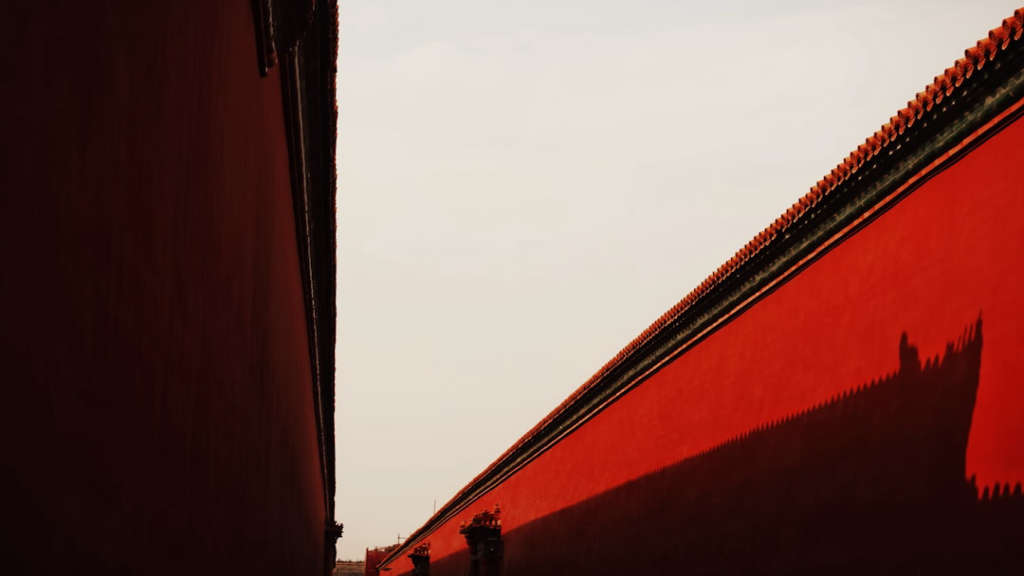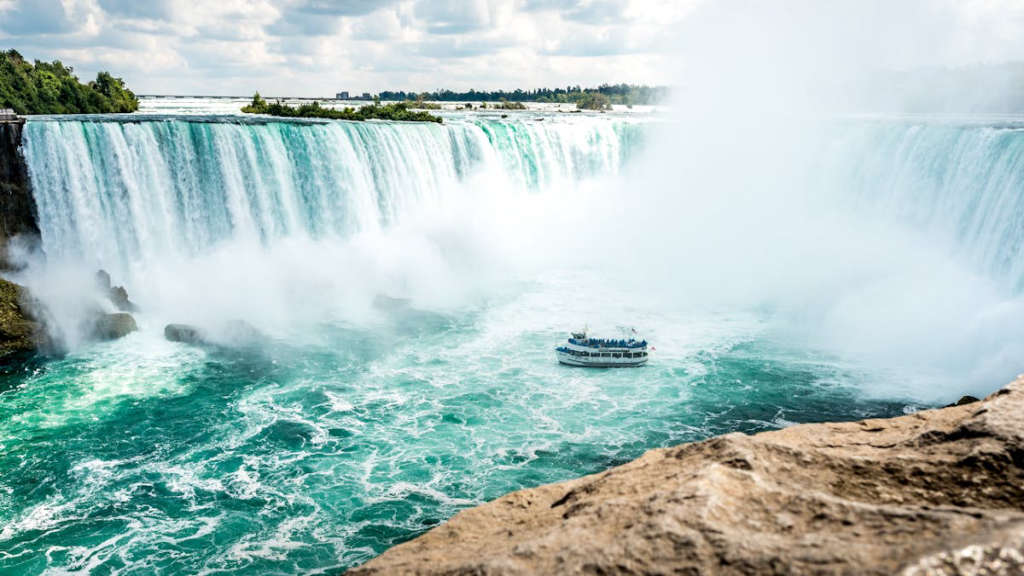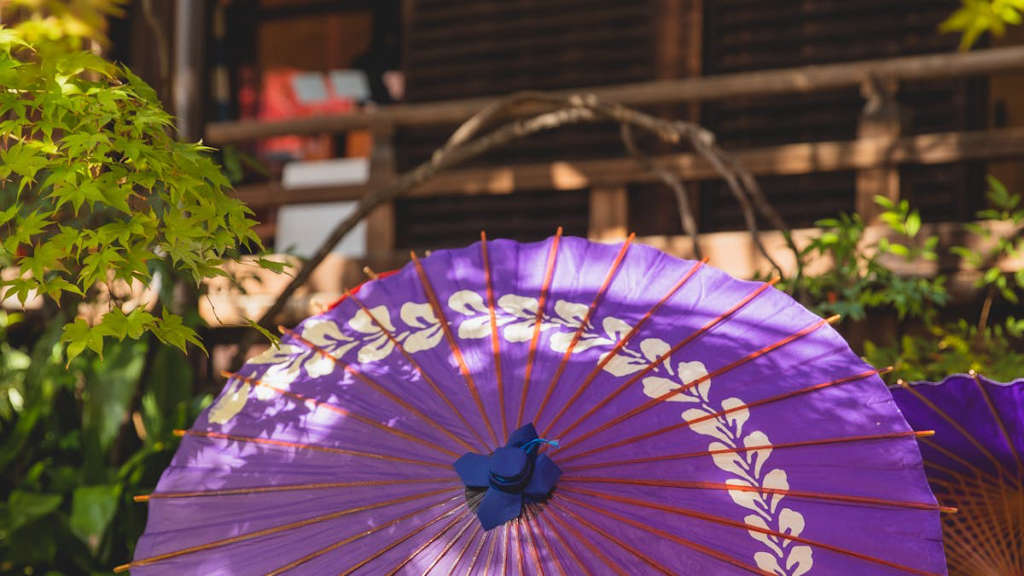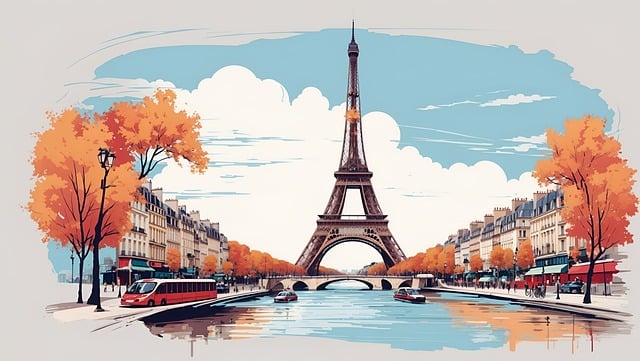If you are planning a trip to Beijing, China, then exploring the Forbidden City should be at the top of your list. This historic and cultural marvel is a must-see destination for anyone visiting the region, offering an incredible insight into China’s rich heritage and imperial past.
Main Points
- Discover the fascinating history behind the Forbidden City, which served as the imperial palace for 24 emperors of the Ming and Qing Dynasties.
- Explore the vast complex, comprised of 980 surviving buildings and covering 180 acres, making it one of the largest and most well-preserved palace complexes in the world.
- Learn about the intricate design, beautiful architecture, and ancient treasures that make the Forbidden City a UNESCO World Heritage Site and a true marvel of human achievement.
- Immerse yourself in Chinese culture and tradition as you wander through the palace halls, courtyards, and gardens, gaining a deeper understanding of this ancient civilization.

History and Architecture of the Forbidden City
The Forbidden City, also known as the Imperial Palace, is a UNESCO World Heritage Site and a symbol of China’s rich history and architectural prowess. Built during the Ming Dynasty and completed in 1420, this majestic complex served as the imperial residence and political center of Chinese government for nearly 500 years.
The architecture of the Forbidden City is a stunning example of traditional Chinese palatial design, characterized by its grand halls, intricate courtyards, and beautiful gardens. The layout of the complex is based on the principles of feng shui, with the main buildings aligned along a central axis and surrounded by a moat and high walls for protection.
Key features of the Forbidden City include:
- Main Entrance: The Meridian Gate, adorned with five marble bridges and intricate carvings, serves as the grand entrance to the Forbidden City.
- Hall of Supreme Harmony: This iconic hall was the ceremonial center of the palace, where the emperor held important events and ceremonies.
- Imperial Gardens: The lush gardens with elegant pavilions and ancient trees offer a peaceful retreat within the bustling city.
Visiting the Forbidden City is a must for anyone interested in Beijing travel and China sightseeing. A Forbidden City tour provides a fascinating glimpse into the history and culture of China, showcasing the magnificence of imperial architecture and the legacy of ancient dynasties.
Overall, the Forbidden City stands as a testament to the grandeur and sophistication of Chinese civilization, attracting millions of visitors from around the world to marvel at its historical significance and architectural beauty.

Exploring the Intricate Courtyards of the Forbidden City
When visiting Beijing, one cannot miss out on the historic Forbidden City. This ancient palace complex, once home to Chinese emperors, is a true cultural experience that allows visitors to step back in time and immerse themselves in the rich history of China.
One of the most fascinating aspects of the Forbidden City exploration is the intricate courtyards that are scattered throughout the complex. Each courtyard has its own unique layout and design, providing a glimpse into the opulence and grandeur of the imperial court.
The Inner Courtyard
As visitors make their way through the Forbidden City, they will come across the Inner Courtyard, which was once the private domain of the emperor and his family. This area is characterized by its serene gardens, beautiful pavilions, and ornate halls, giving insight into the private lives of the royal family.
The Outer Courtyard
On the other hand, the Outer Courtyard was a bustling hub of activity, with officials and courtiers going about their daily duties. The vast open spaces and the grand halls in this area reflect the pomp and circumstance of the imperial court, showcasing the power and authority of the ruling dynasty.
| Courtyard | Description |
|---|---|
| Inner Courtyard | Private domain of the emperor and his family. Serene gardens, beautiful pavilions, and ornate halls. |
| Outer Courtyard | Bustling hub of activity. Vast open spaces and grand halls reflect the power and authority of the ruling dynasty. |
Exploring the intricate courtyards of the Forbidden City is truly a mesmerizing experience. It allows visitors to appreciate the architectural mastery and the attention to detail that went into creating these magnificent spaces, showcasing the grandeur of the imperial era.

Intriguing Art and Artifacts of the Forbidden City
When visiting China, a must-see destination is the Forbidden City. This ancient palace complex is filled with intriguing art and artifacts that offer a glimpse into the rich history and culture of China.
As you stroll through the Forbidden City, you’ll come across a variety of artworks that showcase the talent and creativity of Chinese artists. From intricate paintings to delicate porcelain, the art found within the palace walls is truly mesmerizing.
One of the most intriguing artifacts in the Forbidden City is the collection of imperial treasures. These priceless items, including jade carvings, intricate jewelry, and ornate furniture, provide a fascinating look into the opulence of the imperial court.
The Forbidden City: A Treasure Trove of Chinese History
With its vast collection of art and artifacts, the Forbidden City offers visitors a unique opportunity to immerse themselves in Chinese history and culture. Each piece tells a story and reflects the creativity and craftsmanship of the Chinese people throughout the centuries.
Whether you’re an art enthusiast or simply curious about Chinese history, a visit to the Forbidden City is sure to leave you inspired and in awe of the artistic treasures that are housed within its walls.

The Imperial Gardens: A Tranquil Escape in the Heart of Beijing
Visiting Beijing, China can be a busy and bustling experience, with the city’s vibrant atmosphere and numerous attractions. However, amidst the hustle and bustle, there is a tranquil escape waiting to be discovered: The Imperial Gardens. Nestled in the heart of Beijing, these gardens offer a serene oasis that transports visitors to a different time and place.
History and Heritage
The Imperial Gardens have a rich history that dates back to the Ming Dynasty, when they were first established as the Imperial Palace Garden. Over the centuries, the gardens have been expanded and renovated, but they have retained their original charm and beauty. Today, they stand as a testimony to the rich cultural heritage of China and the legacy of its imperial past.
Tranquil Beauty
As visitors step into the Imperial Gardens, they are greeted by a landscape of lush greenery, serene lakes, and traditional architecture. The carefully manicured pathways lead to picturesque pavilions and tranquil corners, where one can sit and contemplate the beauty of the surroundings. The gardens are designed to evoke a sense of peace and tranquility, making them a perfect place for a leisurely stroll or quiet reflection.
Must-See Attractions
Within the Imperial Gardens, there are several must-see attractions that showcase the artistic and architectural prowess of the ancient Chinese craftsmen. One such highlight is the Hall of Imperial Peace, a grand structure adorned with intricate carvings and imperial insignia. Additionally, the Nine-Dragon Wall is a stunning display of colorful artwork that depicts legendary dragons in all their glory.
Planning Your Visit
When planning a visit to the Imperial Gardens, it’s essential to set aside enough time to fully appreciate the serenity and beauty of the surroundings. The gardens are open to visitors throughout the year, with each season offering its own unique charm. Whether it’s the blooming cherry blossoms in spring or the vibrant foliage in autumn, there’s always something delightful to behold.
Overall, a visit to the Imperial Gardens is a must for anyone seeking a peaceful retreat in the heart of Beijing. It’s a place where history, culture, and natural beauty come together to create an unforgettable experience.
The Forbidden City: A Symbol of Chinese Dynastic Power
When one thinks of the grandeur and might of ancient China, the image of the Forbidden City immediately comes to mind. Built during the Ming Dynasty, this opulent palace complex stands as a powerful symbol of Chinese dynastic power and authority.
An Architectural Marvel
The Forbidden City, also known as the Imperial Palace, is a remarkable example of traditional Chinese architecture. With its iconic red walls, golden rooftops, and intricate carvings, it exudes a sense of majesty and grandeur. The symmetry and precision of its layout reflect the meticulous planning and attention to detail that characterized the rule of the emperors.
A Center of Political Power
For over five centuries, the Forbidden City served as the political and ceremonial center of the Chinese government. It was here that emperors held court, received foreign dignitaries, and conducted state affairs. The sheer scale and splendor of the complex were intended to awe and intimidate visitors, reinforcing the notion of the emperor’s divine right to rule.
A Testament to Chinese History
As a UNESCO World Heritage Site, the Forbidden City stands as a living testament to the rich history and cultural heritage of China. It tells the story of the imperial dynasties that shaped the nation and influenced its traditions and values. For modern-day visitors, it offers a rare glimpse into the opulence and power of a bygone era.
In conclusion, the Forbidden City remains a remarkable symbol of Chinese dynastic power, showcasing the architectural prowess, political authority, and historical significance of ancient China.
The Forbidden City’s Influence on Modern Chinese Culture
The Forbidden City, also known as the Palace Museum, has played a significant role in shaping modern Chinese culture. Its impact can be seen in various aspects of Chinese society, from architecture to art, and even in modern-day festivities.
Architecture
The architecture of the Forbidden City has influenced countless buildings and structures across China. Its traditional Chinese palatial design, with intricate carvings, vibrant colors, and majestic rooftops, has become a symbol of Chinese architecture. Many modern buildings, including government offices and businesses, draw inspiration from the Forbidden City’s distinctive style.
Art and Design
The art and design showcased in the Forbidden City have also left a lasting impact on modern Chinese culture. The intricate paintings, calligraphy, and porcelain collections housed within the Palace Museum have served as a source of inspiration for contemporary Chinese artists. Elements of traditional Forbidden City art can be seen in modern paintings, pottery, and other forms of visual art.
Traditional Festivities
The Forbidden City’s influence extends to traditional Chinese festivities and cultural practices. The palace was the center of imperial ceremonies and rituals, many of which are still observed in modern-day China. The customs and traditions that originated within the Forbidden City, such as the Lunar New Year celebrations and dragon boat festivals, continue to be an integral part of Chinese culture.
“The Forbidden City stands as a testament to the rich heritage and cultural legacy of China, influencing generations past and present.”
In conclusion, the Forbidden City’s impact on modern Chinese culture is undeniable. Its architectural, artistic, and ceremonial contributions have left an indelible mark on various aspects of Chinese society, ensuring that its legacy continues to thrive.
Preservation Efforts and Challenges Facing the Forbidden City
The Forbidden City, also known as the Palace Museum, is a UNESCO World Heritage site located in the heart of Beijing, China. It is a symbol of China’s rich history and cultural heritage, attracting millions of visitors from around the world. However, the preservation of this ancient complex comes with its own set of challenges.
Efforts to Preserve the Forbidden City:
- Conservation and restoration projects: The Forbidden City has undergone extensive conservation and restoration efforts to maintain its structural integrity and artistic significance.
- Collaboration with international organizations: The Palace Museum has partnered with various international organizations to exchange expertise and resources in preservation efforts.
- Public awareness and education: The museum has taken initiatives to raise public awareness about the importance of preserving the Forbidden City and its cultural significance.
Challenges Facing Preservation:
- Environmental pollution: The surrounding urban environment poses a threat to the preservation of the Forbidden City, leading to issues such as air pollution and acid rain.
- Increased tourism: While the influx of tourists is beneficial for the cultural significance of the site, it also brings challenges in managing foot traffic and minimizing wear and tear on the ancient structures.
- Aging infrastructure: The ancient buildings and artifacts within the Forbidden City require constant maintenance and preservation efforts to prevent deterioration.
Despite these challenges, the preservation of the Forbidden City remains a top priority for the Chinese government and cultural organizations. With ongoing efforts and international collaboration, it is hoped that this iconic landmark will continue to stand the test of time for future generations to admire and appreciate.
Visiting Tips: Navigating the Forbidden City Like a Pro
Are you planning a trip to Beijing and want to make the most of your time at the Forbidden City? Look no further! We’ve got all the insider tips you need to navigate this historical site like a pro.
Arrive Early
One of the best ways to avoid the crowds at the Forbidden City is to arrive early in the morning. By getting there before the tour buses and crowds, you’ll have a much more enjoyable and peaceful experience. Plus, you’ll have the opportunity to take some stunning photos without hoards of people in the background.
Wear Comfortable Shoes
The Forbidden City is massive, spanning over 180 acres, so be prepared to do a lot of walking. Make sure to wear comfortable shoes to avoid sore feet. You’ll be doing a lot of standing and walking on hard surfaces, so cushioned and supportive footwear is key.
Plan Your Route
With over 900 buildings and thousands of rooms, the Forbidden City can be overwhelming to navigate. Before your visit, take some time to plan your route and prioritize the areas you most want to see. This will help you make the most of your time and ensure you don’t miss any must-see attractions.
Respect the Rules
As with any historical site, it’s important to respect the rules and regulations of the Forbidden City. Be mindful of signage, stay on designated paths, and avoid touching any of the artifacts or buildings. By doing so, you can help preserve this incredible piece of history for future generations to enjoy.
| Visiting Tips | Details |
|---|---|
| Arrive Early | Beat the crowds and enjoy a peaceful experience |
| Wear Comfortable Shoes | Prepare for lots of walking and standing |
| Plan Your Route | Prioritize must-see attractions to make the most of your visit |
| Respect the Rules | Follow signage and regulations to preserve the site |
By following these tips, you’ll be able to navigate the Forbidden City like a pro and have an unforgettable experience exploring this incredible piece of history.
The Forbidden City After Dark: Nighttime Wonders and Tales
As the sun sets over the majestic Forbidden City, a new sense of wonder and mystery descends upon this ancient palace. The nighttime ambiance transforms the once bustling corridors into a tranquil and enchanting oasis, filled with tales of emperors and ancient Chinese dynasties. The Forbidden City after dark is a sight to behold, offering a unique experience that transports visitors back in time to a bygone era.
Walking through the Forbidden City at night, visitors are greeted by a mesmerizing display of lights and shadows. The glimmering lanterns cast an ethereal glow on the intricate architecture, illuminating the ornate carvings and grand courtyards. The whispers of history seem to echo through the corridors, as if the spirits of emperors and concubines are still lingering within the ancient walls.
One cannot help but be captivated by the enchanting stories that come alive after dark. Tales of forbidden romance, political intrigue, and imperial power play out in the minds of visitors, adding a layer of depth to the already awe-inspiring surroundings. The Forbidden City truly becomes a living, breathing entity after the sun sets, inviting guests to immerse themselves in its rich history and mythical allure.
Unveiling the Forbidden City’s Nighttime Wonders
Exploring the Forbidden City after dark is a once-in-a-lifetime experience that allows visitors to see this iconic landmark in a completely new light. The serene atmosphere and mystical allure of the nighttime setting create a sense of timelessness, making it easy to imagine the palace as it once was during its most glorious days. The intimate connection between the past and the present is palpable, drawing visitors into a world of ancient secrets and untold stories.
For those seeking a truly unforgettable adventure, a nighttime tour of the Forbidden City is a must. The dazzling display of the palace’s architecture and the evocative ambiance of its after-dark tales make for an experience that is both captivating and thought-provoking. It is a journey through time and history, offering a glimpse into the soul of ancient China that is not to be missed.
In conclusion, the Forbidden City after dark is a realm of enchantment, mystery, and timeless beauty that leaves a lasting impression on all who have the chance to witness its nighttime wonders. It is a testament to the enduring legacy of China’s imperial past, offering a glimpse into a world that is as captivating as it is unforgettable.
Conclusion
Overall, visiting the Forbidden City in Beijing, China is a must-see destination for any traveler. The rich history, stunning architecture, and cultural significance make it an unforgettable experience. Whether you are interested in history, architecture, or simply want to immerse yourself in the beauty of this iconic site, a Forbidden City Beijing China Travel Tour is sure to leave you with lasting memories. Don’t miss the opportunity to explore this incredible piece of Chinese history.
Frequently Asked Questions
What is the Forbidden City?
The Forbidden City is a historic palace complex in Beijing, China, and it served as the imperial palace for 24 emperors during the Ming and Qing dynasties.
How large is the Forbidden City?
The Forbidden City covers an area of 180 acres, with 980 surviving buildings.
What is the significance of the Forbidden City?
The Forbidden City is a symbol of imperial power and the best-preserved ancient architectural complex in China.
What are the must-see attractions in the Forbidden City?
Some of the must-see attractions in the Forbidden City include the Hall of Supreme Harmony, the Palace of Heavenly Purity, and the Imperial Garden.
Is the Forbidden City open to the public?
Yes, the Forbidden City is now a museum and open to the public for visitation.
What are the visiting hours for the Forbidden City?
The Forbidden City is open from 8:30 am to 5:00 pm in the peak season and from 8:30 am to 4:30 pm in the off-peak season.
Are there guided tours available in the Forbidden City?
Yes, guided tours in various languages are available for visitors who want a more in-depth understanding of the history and architecture of the Forbidden City.
Is photography allowed in the Forbidden City?
Yes, photography for personal use is allowed in most areas of the Forbidden City, but there are restrictions on the use of flash and tripods.
Are there any dining options in the Forbidden City?
Yes, there are some traditional Chinese restaurants and teahouses within the Forbidden City where visitors can experience authentic cuisine.
Is there a gift shop in the Forbidden City?
Yes, there are gift shops offering various souvenirs, books, and cultural items related to the Forbidden City and Chinese history.






















0 Comment